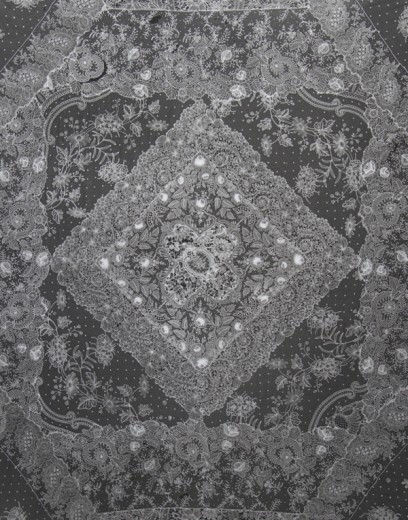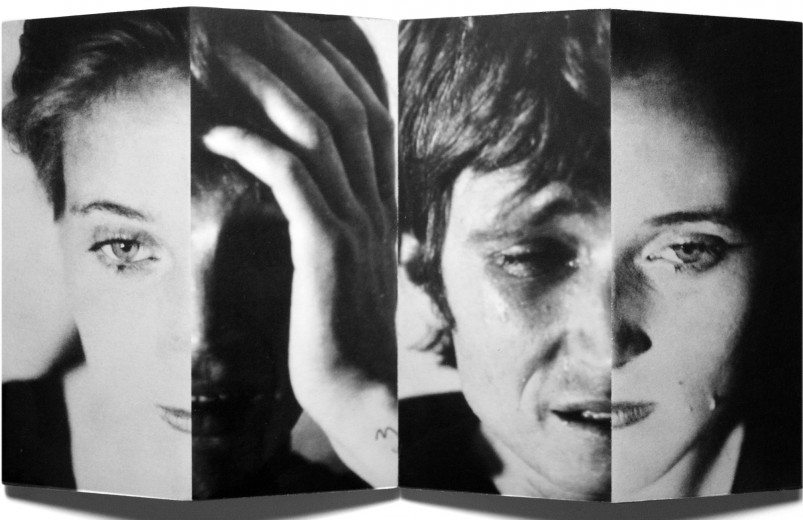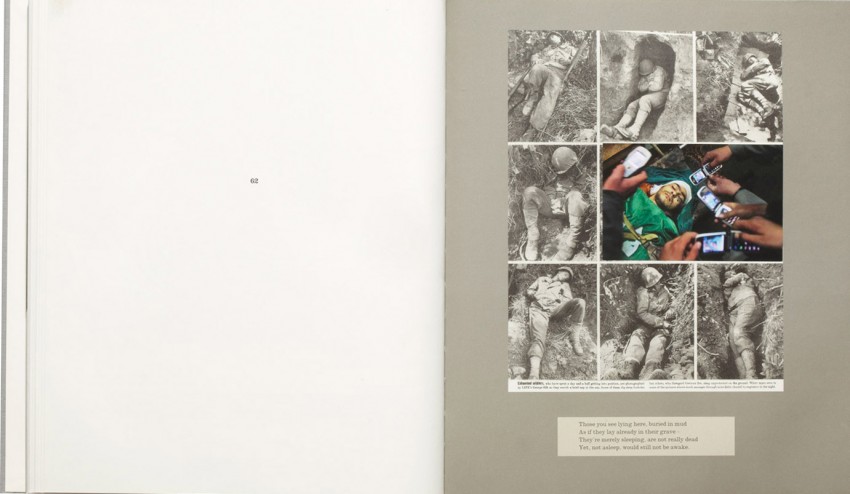INHALE is a cultural platform where artists are presented, where great projects are given credit and readers find inspiration. Think about Inhale as if it were a map: we can help you discover which are the must-see events all over the world, what is happening now in the artistic and cultural world as well as guide you through the latest designers’ products. Inhale interconnects domains that you are interested in, so that you will know all the events, places, galleries, studios that are a must-see. We have a 360 degree overview on art and culture and a passion to share.

The New Photography exhibition series, initiated in 1985, introduces critical ideas in contemporary art. This edition presents recent works by eight international artists who have redefined photography as a medium of experimentation and intellectual inquiry. Their porous practices—grounded in photography books, mass media, photomontage, music, film, and science—mark a shift in the understanding of what a picture can be. Photography, in this expanded discursive field, stands in as-yet-unmapped relations to other artistic disciplines. These relations contribute to the content of images—images that may document, invent, interpret, or involve sustained transformations of their subjects. Underscoring the idea that there has never been just one type of photography, the artists in this exhibition explore dialectical reversals between abstraction and representation, documentary and conceptual processes, the uniquely handmade and the mechanically reproducible, and analog and digital techniques. They thus turn pictures into questions, creatively reassessing the meaning of image-making today.
Fowler, a free-jazz percussionist and a performer on the rock/DIY underground music circuit (under the name BARR), became a visual artist in 2008. In his signature works, Fowler combines up to four framed pictures, “crashing” them together. In this way, he mixes photography, sculpture, and performance. Largely autobiographical, the three-dimensional pictures combine snapshots of his friends, arrangements of flowers, the artist’s studio, mirrors, and screens in restructured narratives.
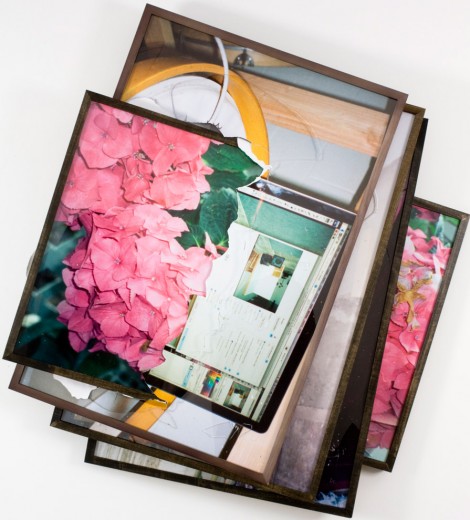
Summer 2010 (Computer on 20” Slingerland Bass Drum, Accident/The Wood Fell On Me In Studio May 20 2010 #5, “Poster For Dialog With The Band Aids Wolf” Screens in Studio, Flower in Patty’s Gazebo 2). 2010
photo moma.org
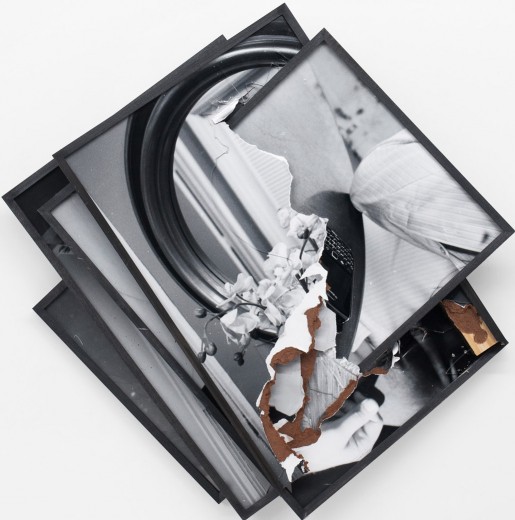
Winter 2010 – Summer 2011 (Mirror in Miami, Max In The Car On His Birthday, Coronado House Window 1, Joel’s Phones on Mei Ling Way Table). 2012
photo moma.org
Oppenheim produces experimental films and photograms (photographs made without a camera). In the series Smoke and related works she uses the techniques of documentary photography to call the premises of the genre into question. She begins with sources such as the Imperial War Museum archive in London and the photo-sharing site Flickr, as sources for images of fire caused by natural or industrial disasters or bombing attacks (such as those over occupied France during World War II), and outputs segments of these pictures to create digital negatives. She then exposes photographic paper through the negatives, using firelight instead of the typical darkroom enlarger as a light source, then develops the photographic paper in Solarol, a specially designed developer that creates a solarized effect, reversing lights and darks.
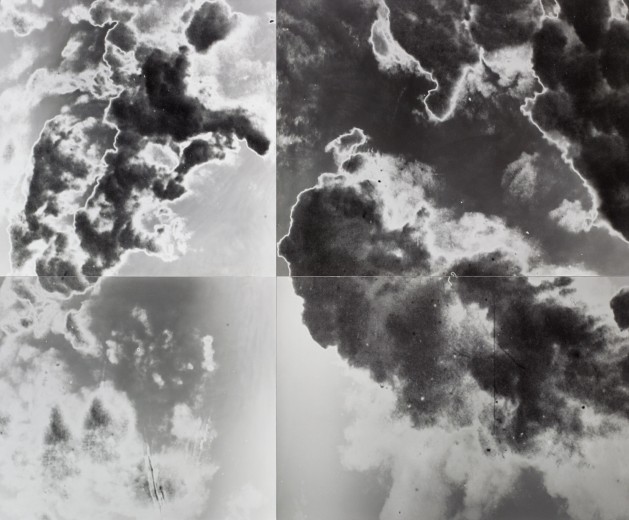
Man holding large camera photographing a cataclysmic event, possibly a volcano erupting, 1908/2012 (Tiled Version 3). 2012
photo moma.org
In her conceptual practice—which incorporates photomontage, painting, and writing—Ostoya revisits the histories of lesser-known avant-garde movements in East-Central Europe in parallel with their well-known Western counterparts, pairing pseudomorphic (visually similar) subjects in compelling new images.
Quinlan’s forays into abstract photography are grounded in feminist history and material culture. For Sophia Quinlan photographed a folded and draped yoga mat—an emblem of social well-being and contemporary life style. This work bears a name taken from one of the thirty-nine famous women featured in Judy Chicago’s feminist art installation The Dinner Party (1979).
War Primer 2 is an artist’s book that inhabits the pages of the 1998 first English-language edition of Bertolt Brecht’s Kriegsfibel (War Primer), originally published in German in 1955. Brecht matched World War II newspaper clippings with four-line poems that he called photo epigrams, with the intent of demystifying the mass-media images. Brecht was skeptical of the role photojournalism played in the political economy of capitalism, and he referred to press pictures as hieroglyphics in need of decoding. In their version, Broomberg and Chanarin silkscreened text directly onto Brecht’s book and superimposed low-resolution screenshots, culled from Google image searches, that refer to the ongoing “War on Terror.”
via moma.org



